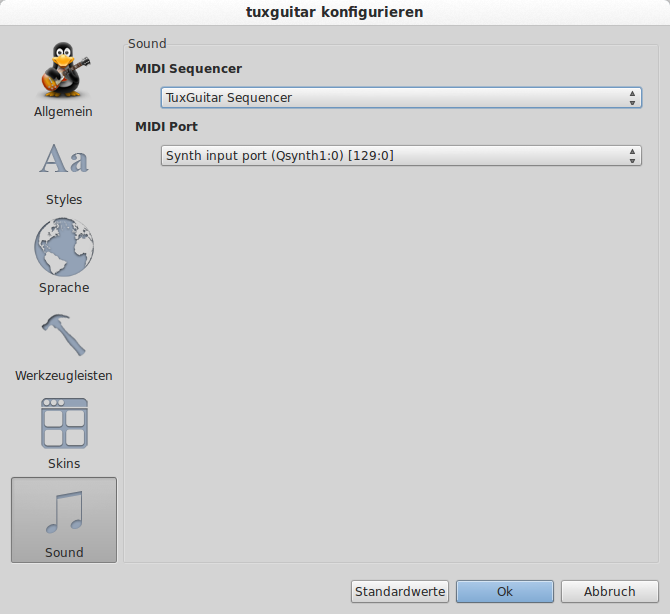Tuxguitar kann aus dem debian-Repository installiert werden. Allerdings brauchts mehrere Pakete: sudo apt-get install tuxguitar-fluidsynth sudo apt-get install tuxguitar-jsa sudo apt-get inst
Tuxguitar kann aus dem debian-Repository installiert werden. Allerdings brauchts mehrere Pakete:
sudo apt-get install tuxguitar-fluidsynth
sudo apt-get install tuxguitar-jsa
sudo apt-get install tuxguitar-oss
sudo apt-get install tuxguitar-alsafluidsynth, die Soundfonts und qsynth müssen auch installiert sein.
Startreihenfolge:
-
qjackctl
-
qsynth
-
tuxguitar
In Tuxguitar dann die entsprechenden Sound-Settings vornehmen. Falls kein Sound, kann mittels folgendem Befehl feststellen, der Port von fluidsynth festgestellt werden:
aplaymidi -l (gibt alle midi-Ports aus)
z.b.:
Port Client name Port name
14:0 Midi Through Midi Through Port-0
129:0 FLUID Synth (Qsynth1) Synth input port (Qsynth1:0)
Dann kann mittels:
aplaymidi -p 129:0 Downloads/cantaloop.mideine Beispiel-Datei abgespielt werden.
Dieser Port sollte dann auch unter Tuxguitar zur Verfügung stehen:
